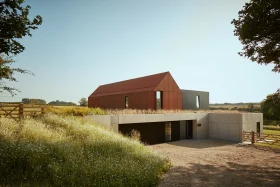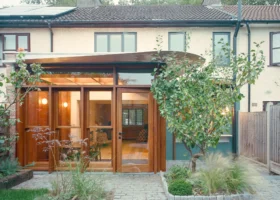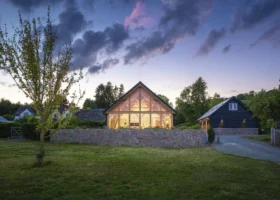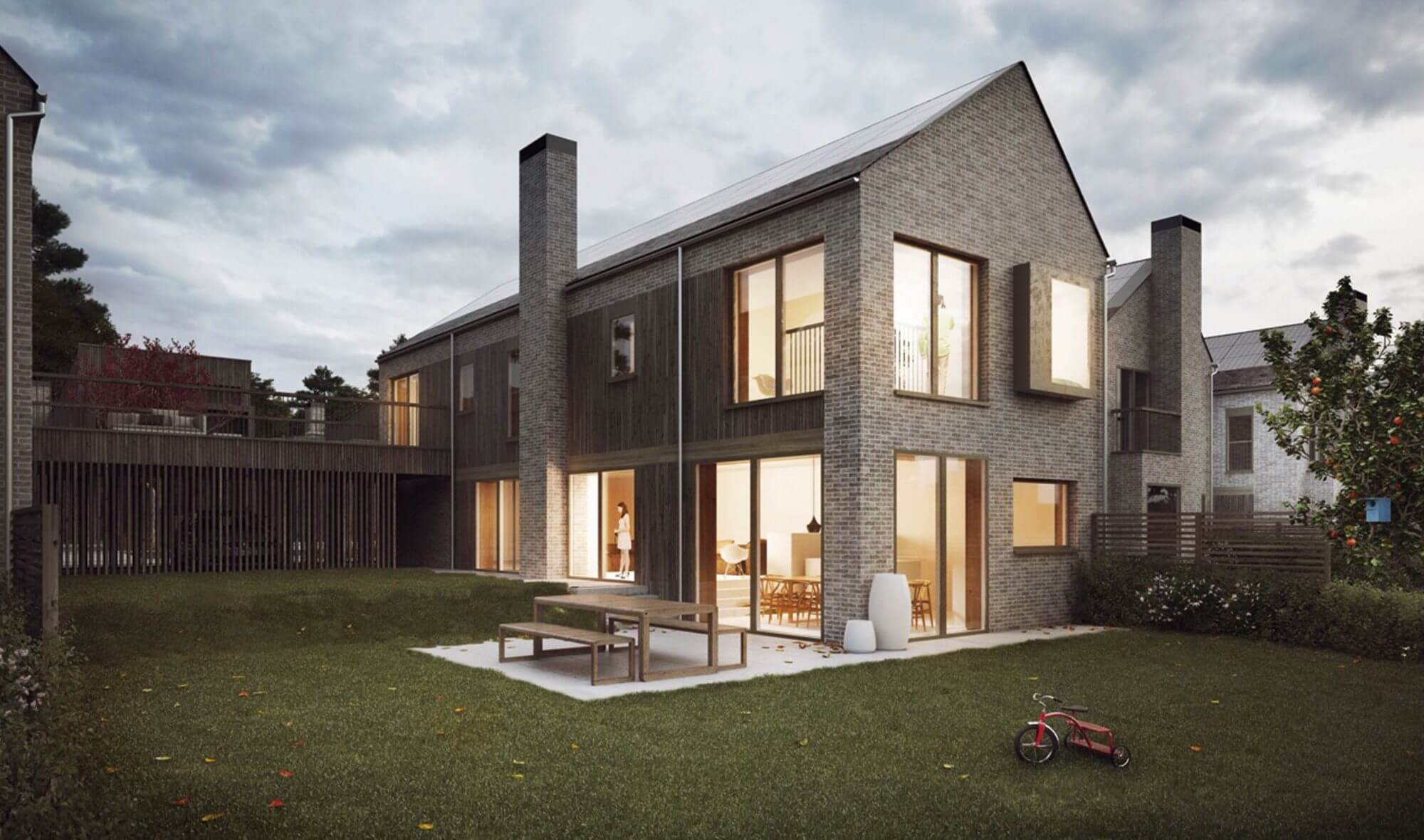The Right to Build – Your Complete Guide
On 31st October 2016, new legislation came into force establishing a Right to Build your own home. This potentially game-changing scheme means that councils in England have a duty to grant planning permission for sufficient serviced plots to meet demand, measured on so-called Right to Build registers, within a three-year period (and on an ongoing basis).
What is the Right to Build?
The idea is that this could not only revolutionise the self-build sector, but also provide a much-needed shot in the arm for the perennially under-delivering housebuilding market. It is hoped that the scheme will increase the number of self and custom build homes in the UK to 20,000 per year.
The Right to Build is enshrined in law thanks to the Self and Custom Housebuilding Act 2015. This was the brainchild of Richard Bacon MP and NaCSBA (the National Self and Custom Build Association).
What does this all mean for the likes of you and me? Fundamentally, we’re now in a position where we can ask our local authorities to look to make viable plots available to us. This should lead to serviced sites with genuine planning permission coming through to match the level of demand indicated on each council’s register.
If enough of us sign up, it could also boost the general appetite for self and custom build among decision-makers, and encourage them to grant planning consent for more bespoke schemes – not just those that are enabled through the Right to Build.
In this article:
- What is the Right to Build?
- What is a serviced plot?
- Who maintains the registers?
- Are the registers only available in England?
- Am I eligible?
- Do I have to have a local connection?
- Where can I sign up?
- Find your local self-build register
- Already registered?
- Are there any alternative registers?
- Can councils opt out of the scheme?
- What information do I need to supply?
- What happens next?
- Will I actually get a plot?
Read the latest Right to Build news and views from Build It and beyond »
What is a serviced plot?
It’s pretty much what it sounds like: a piece of land that already has access to utilities and is fundamentally ready to develop. It doesn’t necessarily have to be council-owned; it could belong to a private landowner, public sector body (such as the MOD) or be part of a larger housing scheme, for instance.
The beauty of being offered a serviced site is that it takes one of the most common risk factors out of a self-build project: namely the fact that getting utilities in place on a virgin plot can add significant delay and cost (sometimes running into the £10,000s).
For the purposes of the Right to Build legislation, the definition of a serviced plot is that it must have access to a public highway and connections for electricity, water and waste water (or that these can be provided in specified circumstances or within a certain timeframe). This means mains gas connections are currently excluded, presumably because there’s not always a supply available in remote locations.
There is provision for further services, such as broadband, to be added to the list at a later date – and of course some local authorities and landowners may choose to provide the infrastructure for these anyway.
Many serviced plots are now being made available through landowners and specialist custom build home enablers. Find out more about custom build >
Who maintains the Right to Build registers?
Fundamentally, the bodies charged with this responsibility are the district and borough councils, unitary authorities and national park authorities in England – of which there are 336 in total. This tally excludes the 27 county councils, which don’t usually deal with planning matters and are only required to keep Right to Build registers for areas that aren’t covered by district bodies (so far, it appears, none do).
Our crack Build It investigation team has looked into each of these 336 authorities and found that the overwhelming majority are fulfilling their obligation to set up a register. But almost a year since the registers became mandatory (1st April 2016), there’s still a handful that aren’t complying. See our Right to Build spreadsheet to find out where to access your local council’s register
Is the Right to Build only available in England?
At present, yes, because delegated powers mean the Self-Build and Custom Housebuilding Act doesn’t automatically apply in Wales, Scotland or Northern Ireland. The Welsh Assembly has the power to vote it in, should it decide to, but in Scotland and Northern Ireland there would have to be a separate legislative process.
Am I eligible for the Right to Build?
The criteria are fairly loose. As long as you’re over 18 and a British citizen or national of a European Economic Area state or Switzerland, you can make an application to join any Right to Build register.
There’s another key qualifying factor: you must be seeking to build a home in the authority’s area as your sole or main residence. So this route isn’t for people looking to develop a house to sell on or a buy to let.
Do I have to have a local connection?
If an authority sets this kind of criteria, only those who meet these additional eligibility checks will be included in Part 1 of its register. Crucially, this is the list for which councils are required to grant planning permission for sufficient plots.
There’s no obligation to do the same for those who qualify only for Part 2 (no local connection), although this data may be used to generate statistics about self-build and inform local policy.
The exact nature of what constitutes a local connection is laid out, within reason, by the presiding council. Typically, you’ll be asked whether you live or work in the area, or have family there. Some will want to know how long you’ve been in the borough or when you last lived or worked there.
A few are applying the armed forces exemption seen in the social housing sector (where local connection rules are waived if you or your spouse/partner has served in the last five years) to the Right to Build, while others ask about key worker status.
Where can I sign up to the Right to Build?
Every relevant authority has a duty to publicise its Right to Build register – and most have chosen to do this by running a dedicated section on their websites about self and custom build. This is where you’ll find details of how to apply for inclusion on the list. Some make it easy to find, but with many the page is tucked away somewhere in the housing or planning areas of the site.
If the website has a decent search facility you should be able to track the right page down; if not, try searching for the council’s name in Google alongside the words ‘custom build’ or ‘self-build’. NaCSBA’s dedicated site includes a fairly up-to-date database, too, or check out Build It’s most recent list below. Alternatively, take the old-fashioned route and give your local planning department a call.
The vast majority of councils have chosen to run their own registers. These can generally be accessed via an online form – but in some cases you’ll have to download a static form and send it in by email or post. There are a few authorities that, whilst still compliant with the regs, haven’t even got this far: instead they simply list the details they expect from you and ask you to drop them an email (Croydon Council is an example of this).
If you find that your council is not fulfilling its legal duties, then be sure to contact them in writing to inform them of their obligation to maintain a register under the Act – and send a copy to your local MP, too. You can also keep us up-to-date on how your council is performing in the comments section below.
A number of councils didn’t engage with the Right to Build Registers initially, but as far as we can tell every council does now run a list. Among the slowest to comply were:
- Barking and Dagenham (register discovered 25th April 2017)
- Boston (register discovered 29th March 2017)
- Bradford (register discovered 25th April 2017)
- Croydon(register discovered August 2022)
- Halton (register discovered 25th April 2017)
- Luton (register discovered August 2018)
- North Lincolnshire (register discovered 25th April 2017)
- Sandwell (register discovered 24th October 2017)
In the early years of the Right to Build, Build It maintained a regularly updated spreadsheet of local councils’ registers. Most are now straightforward to find, but you can still view/download the archive list of Right to Build registers.
I registered before 1st April 2016, so will I be at the front of the queue?
Unfortunately you may not be in the queue for a plot at all. As eligibility criteria were added into the regulations for the official launch of the Right to Build registers on 1st April, prior applications are almost always inadmissible.
So if you signed up before that date, you’ll probably need to re-apply. Make sure you do so using the council’s approved service – and don’t rely on them getting in touch with you to let you know you need to resubmit. The real shame here is that the change to the legislation means many local authorities are currently likely to be under-reporting true demand in their areas.
Are there any alternative registers available?
There are a handful of other resources that enable you to indicate your interest in obtaining a plot. One of these is the Local Self-Build Register (LSBR). Launched by Ecomotive back before the legislation was formally adopted, the site positioned itself as an easy one-stop-shop to sign up to multiple councils’ lists.
The introduction of eligibility criteria and the proliferation of authorities running their own registers, however, mean it’s not become the hub it could have been. We’ve managed to identify 14 authorities that are using LSBR as their principal service.
Meanwhile, a whopping 34,000 people have signed up to BuildStore’s Custom Build Register (as of December 2016). This service offers the opportunity to gain access to news about custom build sites as they become available – and, should you desire, to have your information passed on to landowners who might have plots that suit your requirements.
However, again it doesn’t guarantee entry onto the official Right to Build registers.
Latest News & Comment
Are local councils doing enough for self builders?
Build It expert Mike Hardwick shares his views on the progress of Right to Build
Can councils opt out of the Right to Build scheme?
The 2016 amendments to the Self-Build and Custom Housebuilding Act include a section regarding exemption from the duty to grant planning permission for enough suitable plots.
This is presumably intended as a fallback for areas where there’s high demand but significant challenges to land supply – such as in city centres – and the authority must apply to the Secretary of State to obtain an exemption.
At the moment, we’re not aware of any successful applications for this (or indeed of how a council could apply). Even if a local authority were to be granted an exemption, it would still have to have regard for self-build demand indicated by its register – it just wouldn’t be under the same duty to deliver as many permissions as there were entries on the list.
How can I apply for the Right to Build?
This is fundamentally down to your local authority’s applicaiton process. Some only ask for the bare minimum the legislation requires – which means supplying your name, address and a declaration that you’re eligible for inclusion on its Right to Build register (generally they’ll only accept one entry per household).
Sometimes you’ll need to give proof of identity, such as a copy of your passport (one council, Blackpool, requires you to have this certified by a solicitor or the Post Office – which currently charges £10.50 for this service – if you’re emailing or posting copies). If you’re applying as part of a group, you must provide the name and address of the association and a lead contact, along with the number of plots you wish to acquire.
The vast majority of councils will ask for some additional detail about your interest in building your own home. Common questions include:
- Whether you have a local connection to the area
- What level of involvement you want
- An idea of the size of plot you’re after (in m2)
- How many bedrooms you’d like to have
- When you’d be able to start on site (typically within a year, one to two years and three years or more)
- Your preferred area
- Why you want to build your own house
- Where your finances stand (do you have savings and/or a home to sell, for instance, and will you need a self-build mortgage?)
While much of the information requested is on a voluntary basis, it’s worth spending time on. This is because the council can better match you with plots that might genuinely suit your needs, as and when they become available. It will also allow them to gather pertinent data on the wider demand for different types of custom build scheme in their regions.

In addition to the Right to Build regulations, the government is also making finance available to smaller developers through the likes of the new Home Building Fund – which provided £365,000 to help enable custom build specialist Plot’s 10-unit Village Farm scheme in Murton, County Durham
What happens next?
The council should contact you within 28 days to acknowledge your application for the register and let you know whether you’ve been successful in getting entered onto the list for that base period. Depending on how much information was requested, you may be asked to provide further details.
Note that acceptance onto the register isn’t guaranteed. According to Cotswold District Council’s statistics, for example, 122 applications were made to its register between 1st April and 31st October 2016. Of these, just 66 (54%) met the eligibility criteria. If you haven’t been successful, the authority should let you know why – in which case you may be able to reapply (there’s no appeal process).
You can change the details of your listing if your circumstances change – such as if you’ve decided to widen your search for a self-build plot to additional parts of the council’s jurisdiction. However, be careful when doing this, as any changes you request that affect your eligibility (either wholesale or for the crucial Part 1 list) could see your name struck off the register.
Most local authorities don’t currently charge for entry onto their registers, but the regulations do give them the power to set a fee and more have begun to do so. If you signed up and weren’t charged initially, you may still be liable for a fee during the second and third years of your listing, should the council choose to impose one.
Islington Council was the first we knew of to charge for inclusion on its Right to Build registers, at what seems a rather eye-watering £350. NaCSBA is monitoring the situation with excessive Right to Build register fees and other challenges, and pushing the government to legislate against unfair charges.
Will I actually get a plot?
On the face of it, you might think everyone on the list should be offered the opportunity to purchase a piece of land. But sites won’t become instantly available – councils have up to three years to permission the plots requested in each 12-month base period.
So for the registration period between 31st October 2016 and 31st October 2017, as long as the authority offers enough serviced sites to meet the level of demand indicated on its list before 1st November 2019, it’ll be fulfilling its duties. In some cases councils will only have to service the demand level indicated by those eligible for Part 1 of the list.
It’s also worth bearing in mind there’s no guarantee councils will make land in their ownership available as serviced plots. While some pro-active authorities will look to do so (as at Graven Hill) others will prefer to fulfil demand via plots made available by private landowners.
Nevertheless, the legislation should still encourage more viable self build sites to become available on the open market. Ultimately the aim is to create a landscape in which a buoyant more self and custom build becomes self sustaining.
Of course, there’s no guarantee a given site will match your expectations (the more details you give on the form, the better your chances that pro-active councils will look to help). With that in mind, what exactly is a ‘suitable’ piece of land, anyway, and what happens if you decide to refuse a plot you’re offered?
You should also consider the kind of site that’s likely to become available – if you apply for land in a largely urban borough, you’re much more likely to be offered a brownfield or infill opportunity (possibly as part of an apartment block) than a secluded rural site.
Plus in most cases, unless you’re involved in a project with a very strict design code or a self-finish scheme, you’ll need to gain planning permission for the exact house you want – though the waters should be favourable.
There’s also the question of how councils – and potentially the courts – will see the balance of power between various development pressures. Mole Valley District Council, for instance, already says on its website that being on the register does not amount to a guarantee that land will become available. Mole highlights that about 75% of its area is covered by planning constraints such as green belt and areas of outstanding natural beauty. How these elements of the Right to Build will develop remain to be seen.
My advice is not to put all your eggs in one basket. If you’re serious about tackling a project, then keep plugging away at the traditional land-finding routes, such as estate agents, word-of-mouth and making use of services such as BuildStore’s PlotSearch.
Hopefully the wider climate of government support for permissioning serviced plots will stand you in good stead. Your council should be happy to see you gain consent this way, as it will mean you can be taken off the register as a successful self or custom builder – that has to be a win-win situation.
Image (top): HAB Housing’s Lovedon Fields custom build scheme creates 50 homes on 30 plots in an edge-of-village locations in Hampshire
This article was last updated on 28th August 2022.

































































































 Login/register to save Article for later
Login/register to save Article for later















Comments are closed.